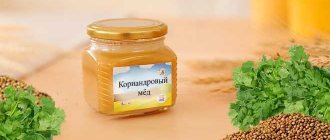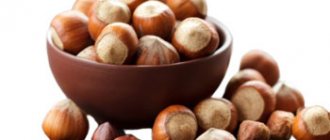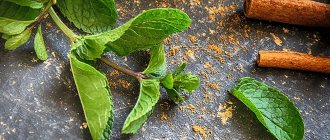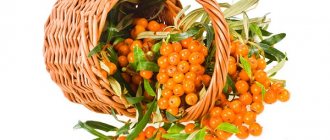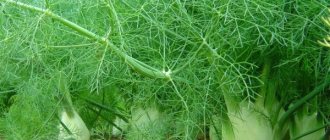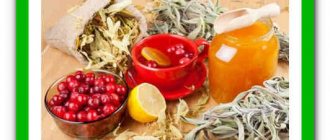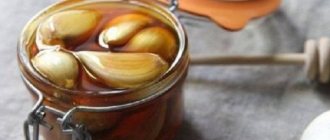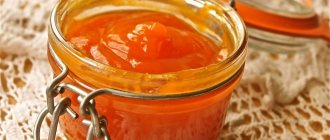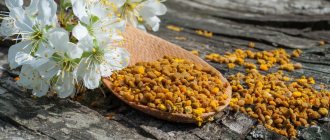Among all types of bee products, honey from chestnut flowers is rare due to the fact that these trees grow only in the southern regions of our country: in Abkhazia, the Caucasus, Crimea, and the Krasnodar Territory. On store shelves you can also find honey from the apiaries of France and Italy - the world's main importer of the “sweet doctor”. This explains its considerable cost, as well as its healing properties and unique taste. Chestnut honey has a rich, tart aroma and an unusual consistency, which depend on the climatic conditions of its growth and the type of tree.
What is chestnut honey
Bees collect their nectar from the flowers of perennial trees, which produce delicious, nutritious fruits. In many countries they are eaten. The type of honey plant from which the honey is collected determines the characteristics of the bee product. Chestnut does not bloom for long - only 2 or 3 weeks in late spring - early summer, in mountainous conditions later - in July.
Experienced beekeepers, under impeccable climatic conditions, collect up to 6 quintals of the finished product from each hectare of plantings. Statistics show that from chestnut pollen collected from 1 hectare, approximately 1 centner of high-grade honey is obtained. The small amount of product is compensated by its advantages. The highest quality honey is obtained from mountain apiaries.
Bees take nectar from two types of plants: seed (edible) and horse (wild) chestnut. These plants belong to different families: sapindaceae and beech. Sowing (real, noble) is distinguished by the unusual coloring of the petals, covered with yellowish blots, which later change shade to orange-red. At the same time, the aroma of the flower is transformed. By this, he seems to signal to the bees that he is ready to begin honey collection. Honey from seed chestnut is obtained:
- dark brown with a reddish tint;
- liquid fine-grained consistency;
- does not sugar for a long time.
Horse chestnut honey is different even in appearance:
- transparency;
- light brown;
- rapid crystallization;
- specific bitter odor.
Bees choose their flight routes themselves, so honey is most often obtained from different types of chestnut. This results in exquisite taste, a special aroma and enhances healing properties.
Important!
The smell and taste depend on weather conditions: in the absence of precipitation in the spring during nectar collection, the special flavor and bouquet become more intense and vibrant.
Honey selection
Since chestnut honey is expensive, how can you determine its authenticity so as not to leave the store with a fake? Both dark and light varieties should not have the aftertaste of caramel or burnt sugar. If it is there, it means the product has been diluted with molasses. The beneficial properties of chestnut honey are lost due to heat treatment; moreover, the mixture is much cheaper than a quality product. The product should not smell sour or be sour; the taste of chestnut honey is tart, but pleasant, bittersweet and smells of wood or nuts. Dark honey remains viscous and flows from the spoon for a long time in a single stream, without drops.
When choosing honey, you should pay attention to its origin: how far is the place where nectar is collected from a large city, and whether it has been exposed to radioactive contamination.
It is best to make a purchase at the apiary itself. If this is not possible, then at the official fair. Since dark chestnut honey cannot be produced north of the distribution of true chestnut trees, it is worth asking the seller about where the goods came from. And think about it, if the honey is not European, not Crimean and not Caucasian.
Buckwheat as a honey plant
Possible benefits and harms from purchasing an untested product may depend on the fact that in rare cases bees collect a lot of nectar from inedible plants whose flowers are also poisonous, which is quite rare, but still happens. Such sweetness can cause poisoning.
Preparation of chestnut honey
Bee product is collected in mid-summer. Beekeepers specifically move the hives to chestnut groves in advance and even in some cases hang them on trees. The miniature size of the flowers and the short flowering period are the reasons for the small volume of honey obtained. Often you have to pump out a sweet product from houses that are not completely filled.
Interesting!
The bees themselves really like chestnut nectar and have a beneficial effect on their well-being. A weakened bee colony released near a chestnut grove becomes stronger, healthier, and more efficient.
Often insects cannot stop even after sunset, because of this they lose the way to their apiary in the forest and disappear.
Chemical composition and calorie content
The taste and healing properties of honey directly depend on its composition. The structure of the bee product is quite complex. It includes more than 3 dozen different healthy ingredients:
- vitamins C, E, K, PP, group B;
- 20 micro- and macroelements (iron, sodium, phosphorus, zinc, iodine, fluorine);
- carbohydrates;
- polysaccharides;
- fructose;
- enzymes;
- amino acids;
- phytoncides.
The optimal moisture content is no more than 18-20%. Exceeding this amount confirms the artificial origin of the product.
Carbohydrates are the most important ingredient. However, the absence of fat and minimal protein content do not include the product on the dietary list.
Interesting!
Unlike other types of honey, which are distinguished by their sweetness, chestnut nectar contains a minimal amount of sugar. Rather, it is characterized by a slight bitterness. It does not indicate low quality; on the contrary, it is an indicator of the authenticity of the product.
The energy value of 100 g of chestnut honey is about 285 kcal - the lowest among all varieties of “sweet medicine”.
Norms and rules of consumption
Chestnut honey is used for therapy and prevention. Natural remedies give the best results when taken in their natural form.
The low caloric content allows you to regularly include it in your diet. The specific taste makes it possible to observe moderation in consumption - you can’t eat too much of this honey. Despite the valuable healing properties, nutritionist recommendations limit the daily consumption of bee delicacy to no more than 120 g per day. Small children can be given 1-2 tbsp. l. per day (40-50 g).
In order not to harm your health if you are individually sensitive or have serious diagnoses, you should consult with your doctor on how to take the folk remedy. To minimize the risk and enhance the beneficial effects of chestnut honey, following certain rules of use:
- avoiding alcohol, which will negate the benefits of antioxidants;
- course use of the product from 2 to 6 months for therapy and prevention;
- combining it with pollen, propolis and royal jelly;
- quitting smoking or reducing tobacco consumption;
- Use neat, do not mix in hot liquid.
Advice!
Chestnut honey is added to baked goods only for taste and smell. Heat treatment (heating above 60 degrees) reduces the benefits of honey, and sometimes makes it harmful to health.
What are the benefits of honey for men?
Honey and bee products are natural organic compounds that contain almost all the components necessary for metabolic processes. And any pathological conditions are somehow associated with metabolic disorders in the body. Therefore, this natural remedy is used to treat and prevent a wide variety of diseases. For men, honey is a natural remedy, the regular use of which will help maintain male strength for a long time.
Bee honey contains biologically active substances that have a mild effect on the male body. This:
- Carbohydrates – about 80%. The most fruit sugars in honey (35-40%) are fructose and glucose (30-35%). These are simple, easily digestible sugars that provide quick energy. They actively influence carbohydrate and fat (including cholesterol) metabolism, preventing the development of obesity and cardiovascular diseases.
- Water – honey contains about 20%.
- The remaining components make up no more than 5%:
- vitamins : ascorbic acid (strengthens blood vessels and immunity) and energy drinks from group B (B2 - a natural tranquilizer, B3 - causes rapid vasodilation and a rush of arterial blood to the genitals, B5 - normalizes all types of metabolism, B6 - the most important energy drink, B9 - maintains normal condition of the genital organs and nervous system);
- minerals : potassium and magnesium (heart minerals), calcium (regulates heart rate, blood clotting, muscle contraction), phosphorus (participates in the formation of high-energy compounds), iron (ensures the delivery of oxygen to tissues), zinc (participates in the synthesis of testosterone);
- proteins and amino acids - there are very few of them, about 0.3%;
- enzymes - substances that greatly accelerate the biochemical reactions involved in metabolism;
- other biologically active substances that provide the healing properties of honey: natural polyphenols (antioxidants), flavonoids (plant pigments - antioxidants that can change the body's response to allergens, viruses and carcinogens), phytoncides (antimicrobial effect), organic acids (normalize acid-base balance) , acetylcholine (a neurotransmitter that improves conductivity in nerve cells).
Despite the fact that the percentage of biologically active substances in honey is insignificant, they can have an active effect on the body. This happens because when consuming honey, rapid energy is generated; all beneficial substances are rapidly absorbed in the intestines without leaving any traces, enter the bloodstream and are included in metabolic processes.
Honey has antibacterial, antiviral, antifungal, anti-inflammatory, analgesic and hyposensitizing (antiallergic) effects. It calms and increases the body's adaptation to external influences.
The use of this product will be useful for any types of sexual disorders:
- in case of libido disorders , testosterone synthesis is stimulated and nervous tension is relieved;
- in case of impaired potency (erectile dysfunction), blood circulation improves, the walls of blood vessels are strengthened, during sexual arousal, the arteries easily relax, fill with blood, squeezing the veins and causing an erection;
- with latent infectious and inflammatory processes - if they occur in the urethra and prostate gland, honey has an antimicrobial and anti-inflammatory effect;
- in case of reproductive dysfunction , they improve metabolism and the formation of full-fledged sperm.
Beneficial properties of chestnut honey
The beekeeping product has long been widely used by folk healers who know how chestnut honey is beneficial for various diseases. He shows:
- bactericidal qualities that can neutralize pathogenic microflora and fight infection;
- antiseptic properties for inflammatory diseases of many systems;
- preventive immunostimulating effect, increasing resistance to viruses, microbes, colds;
- restores the body’s energy expenditure after illness or physical activity;
- improves the functioning of the gastrointestinal tract thanks to enzymes, eliminates congestion;
- normalizes the activity of the cardiovascular system and blood pressure;
- removes harmful toxins and waste waste;
- heals skin damage.
Chestnut honey with its beneficial properties is not addictive, so it can be used rationally for a very long time.
For women
The unique vitamin composition of the healing product helps normalize the hormonal levels of women, thereby reducing the symptoms of menopause. Chestnut honey helps in the treatment of gynecological diseases and facilitates the treatment of genitourinary pathologies. Consuming it improves mood and activates metabolism. The cosmetic effect achieved by taking the bee product plays a huge role for women: due to the enrichment of cells with oxygen, the elasticity of the skin increases, and the quality of hair and nails improves.
For men
Experts say that regular consumption of chestnut honey:
- promotes the overall health of the male body;
- strengthens immune defense;
- replenishes energy;
- improves well-being and mood;
- increases potency.
The natural remedy is used in combination to treat problems of the genitourinary system. Taking it reduces the risk of prostate diseases.
For children
Chestnut honey has a beneficial effect on children's health. In the absence of contraindications and the correct dosage, consuming a bee product helps babies replenish missing vitamins and amino acids. The natural remedy has a positive effect on many functions of the child’s body: it stimulates appetite, improves the functioning of the gastrointestinal tract, breathing, and blood supply to organs. Honey is especially useful for girls who have been diagnosed with thyroid pathology. The product normalizes hormonal levels.
For pregnant
During pregnancy, in order not to harm the fetus, women are not recommended to take many medications. A successful replacement for medications is traditional medicine. The beneficial substances contained in honey perfectly support well-being during pregnancy:
- strengthen immunity;
- normalize sleep;
- eliminate toxins;
- helps with colds;
- reduce symptoms of toxicosis.
The product will only be beneficial if used correctly and without individual intolerance. You should definitely consult an allergist. The daily dose is no more than 100 g (2-3 tablespoons), divided into 3 servings half an hour before meals.
Indications for use
The diseases and conditions for which chestnut honey will be useful are very diverse. Like any other type of gift from bees, it is used for colds, flu, and sore throat.
We recommend reading: Wheatgrass, what is it, how is it useful, how to prepare it at home
It facilitates the discharge of sputum, therefore it is used for bronchitis, and it also has an antitussive effect.
The high content of vitamin C, sucrose and fructose makes chestnut honey a natural energy drink and immunostimulant. It has a general strengthening effect, alleviates fatigue, chronic fatigue syndrome, and helps fight stress.
Honey increases appetite, while simultaneously providing a gastroprotective effect, eliminates shortness of breath, reduces the acidity of gastric juice, and can be used in addition to enzyme preparations that accelerate the digestion of nutrients.
Strengthens the walls of blood vessels, fights swelling, high blood pressure, and hemorrhages. Reduces blood viscosity and the tendency to form blood clots. Used as an anti-inflammatory agent for thrombophlebitis, edema, varicose veins.
Can be used externally as part of masks for dry skin, acne, tendency to baldness and brittle hair.
Are there any contraindications
Chestnut honey, like all other bee products, in addition to valuable medicinal properties, has some limitations. Doctors can voice beneficial properties and contraindications, the main one being individual sensitivity. The appearance of allergic symptoms (swelling, rashes, itching, lightheadedness, diarrhea) is a signal for urgent refusal of the drug. Excessive consumption of sweet treats can be harmful to your health. This applies to patients with hypotension, excess weight, and diabetes. They should be careful when taking honey in minimal portions.
Harm of chestnut honey and contraindications
Like any waste product of bees, chestnut honey has, in addition to a number of medicinal properties, also a list of contraindications. Excessive consumption of chestnut honey is more harmful to human health than beneficial:
- The product can cause severe allergic reactions, so those with allergies to pollen and nectar should use it with extreme caution.
- People with diabetes are also advised to strictly adhere to their daily intake.
- The product may harm the health of nursing and pregnant women.
Otherwise, chestnut honey has no contraindications. Possible harm is caused only by excess content of the product in the diet.
The following symptoms indicate an allergic reaction:
- nausea;
- rash;
- itching;
- stomach upset;
- swelling of the mucous membrane;
- Strong headache;
- runny nose.
At the first sign of an allergy, you should stop taking honey-based medications to avoid even greater harm.
Healing effect
It is common knowledge that the best treatment is prevention. At an early stage of the disease, a folk remedy is usually most effective. The benefits and harms of honey have long been studied.
Chestnut honey is used in various ways. The best effect occurs when consumed in its pure form. Many people like to dilute it in warm (not hot) tea or water, and simply spread it on bread. The product is often added to culinary products; it is part of folk recipes.
For a cold
The vitamin remedy facilitates the course of viral diseases and accelerates recovery. Resorption 1 tsp. honey 5 times a day improves well-being, normalizes temperature, softens the throat. Drinking tea with honey and lemon, intensive gargling with decoctions of medicinal herbs (clover) with the addition of honey every 3-4 hours help well. Some healers recommend a mixture of garlic and bee product. Therapy is carried out over 2 weeks.
For cough relief
There are several recipes for reducing the intensity of cough, easing soreness and inflammation of the throat:
- It is effective to use a mixture of honey with radish or its fresh juice in a 1:2 ratio. Take the product 1 tbsp. every one and a half to two hours.
- A useful composition includes aloe juice, vegetable oil (2 tablespoons each) with 100 g of honey. It cures cough in 2-3 days.
- Warm tea with lemon and 1 tbsp. l. Honey has a calming effect if you drink it before bed.
- A drink with milk and 1 tbsp helps to cough up. l. honey
Each patient chooses the recipe that he likes.
Kidney diseases
For the treatment of kidney pathologies, recipes for healing herbal infusions with the addition of honey are fruitfully used. A good result is provided by a rosehip decoction (0.5 l) with 15 g of chestnut beekeeping product. The decoction can be replaced with diluted rosehip tincture. Instead of berry infusion, radish juice (200 ml) is suitable - the effect is similar. A mixture of vegetable oil, lemon juice and honey in a 1:1:1 ratio helps remove sand from the kidneys.
Urolithiasis disease
The healing qualities of chestnut honey are successfully used to treat the inflammatory process in the kidneys and remove sand formed as a result of the dissolution of stones. The product is effective in combination with medicinal herbs.
Chopped calamus root (1 tbsp) is mixed with chestnut honey slightly heated in a water bath and taken 3 tsp. 1 time a day before meals. To prevent the disease, use decoctions (per 200 ml of boiling water) of barberry, birch (40 g) or strawberry (30 g) leaves mixed with 1-2 tbsp. l. honey
Fast healing of burns and wounds
The anti-inflammatory effect of chestnut honey is used in the treatment of scratches, ulcers, minor external injuries, and suppuration. The mixture of bee product with flour is diluted with warm water and a compress is made from this product on the affected area. It is effective to make a composition from honey with sea buckthorn oil in a ratio of 1:2. An alternative recipe: a mixture of fish oil and honey in a ratio of 1:4 and adding 2 g of Xeroform ointment. The use of such lotions will eliminate the risk of inflammation and speed up the healing of injuries.
Treatment of varicose veins
When dilating the veins of the lower extremities, honey compresses are successfully used. Along with them, oral administration is effective. Medicinal mixtures for the treatment of this pathology include chestnut flowers, which have a beneficial effect on blood vessels. The healing composition of honey alleviates the suffering of patients with problem veins and relieves swelling of the legs. The product is applied to a cotton cloth, placed on the affected areas, covered with a film on top and a bandage is secured. The first time the session lasts 2 hours, in the next 2 days the exposure time is increased to 4 hours, then you can keep the bandage on all night.
For gastritis and stomach ulcers
For the treatment of gastroenterological diseases, the healing agent is used in pure and diluted form. In solution, beneficial substances act more productively due to their rapid absorption into the blood and delivery to the cells. For chronic gastritis, a course (3 months) of adding honey to dietary dishes recommended for this pathology helps.
A more complex multicomponent recipe is intended for the treatment of gastrointestinal diseases. It is prepared from 200 g of chopped carrots, 140 g of walnuts, mixed with 230 ml of chestnut honey. Butter gives the dish a refined taste. Use 1 tbsp. l. twice a day half an hour before meals.
Important!
If the acidity of the gastric juice is high, doctors do not recommend taking the drug before meals.
A recipe for a mixture of honey with 10 aloe leaves cooled for a week and a half and crushed with honey in a ratio of 1:10 is effective. Take 1 tbsp. l. on an empty stomach in the morning. Chamomile decoction is effective (2 tbsp per 200 ml of boiling water), into which, after cooling, add 1 tsp. honey
Eye treatment
Chestnut honey in combination with medicinal herbs is effective in treating the organs of vision for making decoctions, lotions, and tampons. 200 ml of the product is added to 1 liter of infusion of dry blueberry leaves, kept in the dark for 12 hours, cotton pads are soaked in the solution and applied to the eyes. Honey water (1 tablespoon per glass of liquid) is used for lotions and eye rinsing.
The inflammatory process is eliminated by tampons soaked in a mixture of honey, onion juice and clover infusion. In addition, daily consumption of the product, due to its vitamin composition, significantly improves vision.
Strengthening potency
Chestnut honey is an excellent aphrodisiac, the strongest of all other types of product due to its anti-inflammatory properties. Reception 1 tbsp. l. The product in its pure form with milk or tea supports male potency well. It is effective to use a mixture of 1 tbsp. l. chestnut honey with 100 g walnuts. Dosage – 1 tbsp. l. 3 hours before bedtime.
Recipes with chestnut honey for health and beauty
There are many options for using chestnut honey. The specific recipe for use is determined based on the intended purpose.
For a cold
An effective auxiliary therapeutic measure during the treatment of colds and acute respiratory viral infections may include the following:
- prepare a cup of tea in the usual way (the choice of variety is determined by individual preferences);
- let the drink cool to 40-45 degrees Celsius;
- add a slice of lemon and a teaspoon of chestnut honey;
- drink in one go;
- repeat the procedure up to three times a day.
For ulcers
The following recipe can help in the treatment of stomach and intestinal ulcers:
- cut aloe leaves;
- place them in the refrigerator for 7 days;
- grind by passing through a meat grinder;
- combine in equal proportions with the beekeeping product in question;
- Take a tablespoon in the morning immediately after waking up (before breakfast).
The minimum course duration is 30 days, the maximum is 2 months.
For diabetes
There are several application options in this case:
- combination with fruits and vegetables;
- taken with low-calorie bakery products (preference should be given to baked goods made from wholemeal flour);
- dissolution in tea/water (recommended temperature - 45 degrees Celsius; best time to take - morning hours).
Diabetes mellitus imposes quantitative restrictions on the consumption of chestnut honey. The maximum daily dose is 2 tablespoons.
With this disease, even regular consumption of the valuable delicacy in question will not cure the disease. The purpose of use may be to alleviate the condition.
When coughing
Bronchitis, cough due to colds and ARVI are indications for this therapeutic procedure:
- squeeze 2 tablespoons of juice from black radish;
- add one tablespoon of chestnut honey to the liquid;
- take orally;
- repeat at intervals of 2 hours.
The amount received is equal to a single dose. Cooking for several steps is unacceptable.
Chestnut honey for hair loss
You can improve your hair health and strengthen its root system like this:
- peel a medium onion and 2 cloves of garlic;
- grind them using a blender/meat grinder;
- combine the composition with chestnut honey (recommended proportions are 4:1);
- supplement the product with a tablespoon of olive oil (recommended for extreme dryness; for oily hair, this step can be skipped);
- apply along the entire length, paying special attention to the roots;
- wrap in polyethylene and insulate;
- leave for 30 minutes;
- wash off as usual.
For sore throat
The antiviral, anti-inflammatory and analgesic effect in this case is characterized by the following recipe:
- combine warm water and chestnut honey (recommended proportions - 1 tablespoon per 250 milliliters);
- stir until completely dissolved;
- carry out the procedure of gargling;
- refrain from drinking and eating for half an hour;
- repeat three times a day.
The optimal water temperature is 40 degrees Celsius.
Chestnut honey for kidney stones
Treatment of kidney stones may include a healing herbal decoction obtained according to the following recipe:
- currant leaves (10 grams);
- hop cones (10 grams);
- prickly tartar (25 grams);
- corn silk (15 grams);
- chamomile (15 grams);
- bedstraw (5 grams);
- pour a tablespoon of the mixture into a glass of boiling water;
- leave for half an hour;
- add a teaspoon of chestnut honey;
- drink in two sessions in the evening.
Chestnut honey for cataracts
There are several treatment options for the disease:
1. Eye drops. The preparation of the medicinal composition involves the following sequence of actions:
- combine aloe juice and honey in equal volumes;
- dilute the duet with boiled water (recommended amount - a tablespoon per 2 teaspoons of base);
- Apply 2 drops of the resulting liquid three times a day to the eyes.
The shelf life of the product is one day. The optimal duration of treatment is 30 days.
An alternative eye drop can be prepared as follows:
- wash the apple;
- cut off the base of the tail;
- clean out the core;
- pour chestnut honey inside;
- cover with the resulting “lid”;
- leave for two days;
- drain the liquid;
- drop 2 drops into the eyes twice a day.
2.Putting under the eyelid. Duration of therapy is 10 days. Frequency – up to 4 times a day.
The idea is to place a small amount of product under the lower eyelid.
Chestnut honey for acne
The following mask exhibits pronounced antiseptic and anti-inflammatory properties:
- crush 3 tablets of acetylsalicylic acid into powder;
- add a teaspoon of chestnut honey;
- to stir thoroughly;
- bring to a creamy state by adding a few drops of boiled water;
- apply the composition to problem areas (this may not only be the face);
- stand for a third of an hour;
- remove residues with cold water;
- moisturize the skin with cream.
Recommended course: frequency – twice a week, duration – 1.5 months, repetition becomes possible after a 30-day break.
Chestnut honey in cosmetology
The healing properties of the product have long been successfully used in aesthetic skin and hair care. Many girls prefer natural substances. They do not trust chemical care products and are afraid of a negative reaction. The cosmetics industry has mastered folk recipes with natural honey.
For facial skin
Thanks to its valuable ingredients, the beekeeping product is suitable for making therapeutic masks for problem skin. They heal small skin defects, relieve acne, peeling, and excessive dryness. Vitamin remedy in combination with medicinal plants:
- disinfects and cleanses the skin;
- eliminates inflamed and painful areas;
- eliminates blackheads;
- softens and evens out the face;
- makes it elastic, silky, healthy.
A banana slice mask, 1 tsp, softens dry skin. 10% cream with honey. The mixture is applied for 0.5 hours, then washed.
A mask made of honey and starch (1 tsp each) removes oily shine and early wrinkles. The composition is applied to the face and washed off after 20 minutes.
Beauty and hair health
The beekeeping product helps to cope with the problem of weak and split ends and stops hair loss. Honey masks improve the condition of the skin on the head and strengthen the hair. They are prepared from grated onion mixed with 4-5 tbsp. l. chestnut nectar. The resulting elixir is applied to the hair roots, left for half an hour, then washed off. The onion smell can be easily eliminated with chamomile infusion.
The difference between natural honey and fake honey
Due to the insufficient distribution of honey trees in the world, the short collection period, and the complexity of obtaining the product, it can be difficult to find it on sale. Demand often exceeds supply, which unscrupulous manufacturers take advantage of. In order not to buy counterfeit chestnut honey, you need to know how to spot a fake. The substance is characterized by a special color, consistency, and aroma. It smells pleasant and has a tart, bitter taste. The dark color is often faked with burnt sugar.
There are several methods for testing the quality of honey. The old test will show a change in color. If you dip a chemical pencil in a spoon of honey, the lead will turn blue. This means the product is fake, diluted with sugar syrup. The natural product will remain homogeneous.
You can check the authenticity of the product with a piece of paper. A little honey is dripped onto it and set on fire. Real substance is not afraid of fire.
Already in August, honey cannot be liquid - it quickly crystallizes.
Advice!
Guarantee of authenticity - purchasing a medicinal product from trusted sellers.
Chestnut honey - how to spot a fake
It happens that beekeeping products are counterfeited. Deception is carried out by introducing impurities: starch, syrup, burnt sugar, water, chalk. Counterfeit detection methods:
- If the taste, smell, and appearance are already familiar, then you can ask the seller to try honey. It is difficult to confuse specific physical properties.
- Revealing bitterness. When the natural product is heated in a water bath, it disappears. If the bitter taste remains, then a fake was purchased.
- Added sugar. To check, you need to drop it on a sheet of paper and set it on fire. If sugar is added, the liquid will burn along with the paper.
- Adding starch. It is enough to drop a solution of iodine onto honey. If it turns white with the formation of a brown precipitate, then it is a fake.
To be sure, it is recommended to purchase chestnut honey from a trusted beekeeper. If this is not possible, then it is better to know the distinctive properties (taste, aroma, appearance) of the product.
Storage at home
The correct content of chestnut honey will fully preserve its healing properties for 2 years. It is not advisable to package the product in plastic containers. To do this, it is best to use a ceramic or glass container with a hermetically sealed lid.
Usually the substance is kept in a dark place, excluding direct sunlight, at a temperature no higher than 20 degrees C, away from the windowsill, stove or microwave. Do not place the jar near products with a strong odor that overpowers the aroma of chestnut.
Under optimal conditions, the benefits of honey will be fully preserved.
The healing qualities of honey are due to the abundance of valuable substances. It helps in the treatment of many diseases, but can cause allergies. Therefore, it is recommended to take it with caution after consultation with a specialist.
Selection of quality product and storage
Chestnut honey is very rare on the shelves of our country (except for those regions where chestnuts grow), so the risk of buying a low-quality product or another variety that the seller passes off as chestnut honey is very high. Choosing a quality product is also complicated by the fact that it can look different.
Honey is obtained from two main types of chestnut - horse chestnut and seed chestnut, and they differ significantly in appearance. The seed chestnut produces a dark, reddish mass, a very liquid consistency, with a tart, bitter taste, exactly the one described above. Horse chestnut honey is strikingly different from this description - it is transparent, white, liquid and tart. The product from seed chestnut is considered more useful.
To buy high-quality honey, you need to try it - the taste of a natural product is very specific. Most people find it unpleasant, but this is the main difference between chestnut honey and other varieties.
Simple tests that will help determine foreign impurities in honey:
- You need to drop honey on the paper and add a drop of iodine. If a precipitate appears and the stain turns bluish or becomes lighter, starch is present.
- A piece of paper soaked in iodine must be set on fire; if it catches fire easily, it means that sugar has been added to the honey.
- Apply a thin layer of honey to your hand and draw a line over it with a chemical pencil. If a noticeable blue stripe appears, the product has been diluted with sugar syrup.
There are other signs that can only be detected at home. For example, if you heat honey, the bitterness will disappear, this is a sign of a natural product. When properly stored, chestnut honey is not candied. Horse chestnut, on the contrary, produces a quickly crystallizing mass.
Honey should be stored in a glass or high-quality plastic container with a tightly closed lid in a dark place at room temperature. Do not expose it to the sun, overheat it or put it in the refrigerator. Products that give off a strong odor should be stored separately from honey.

